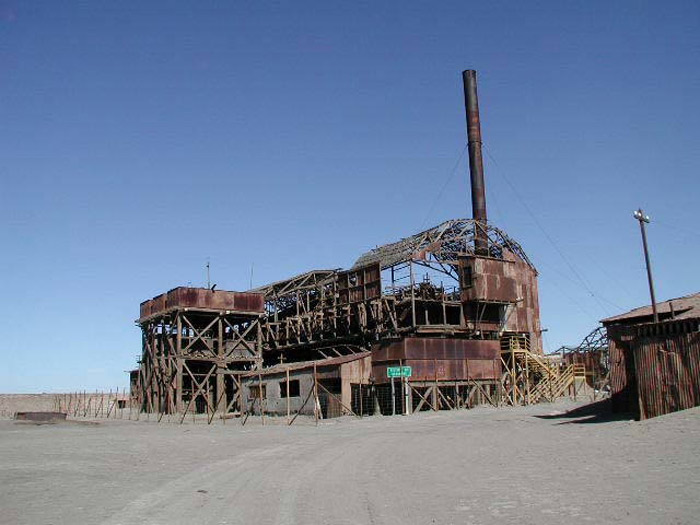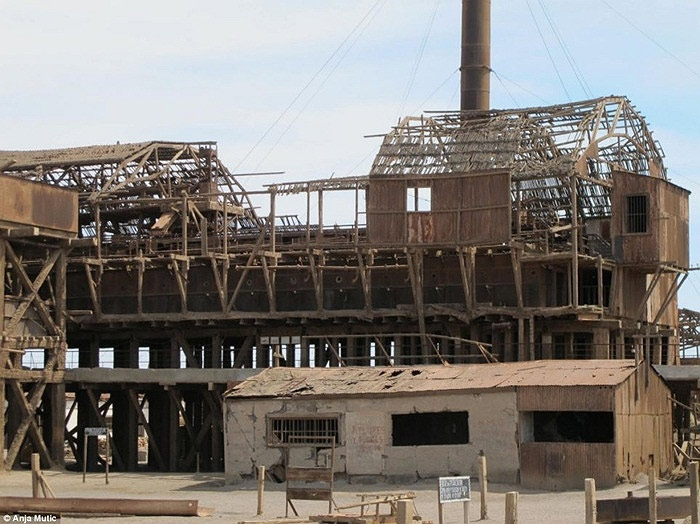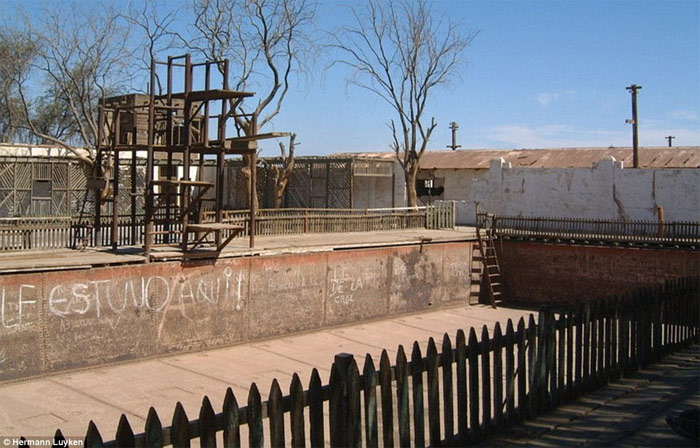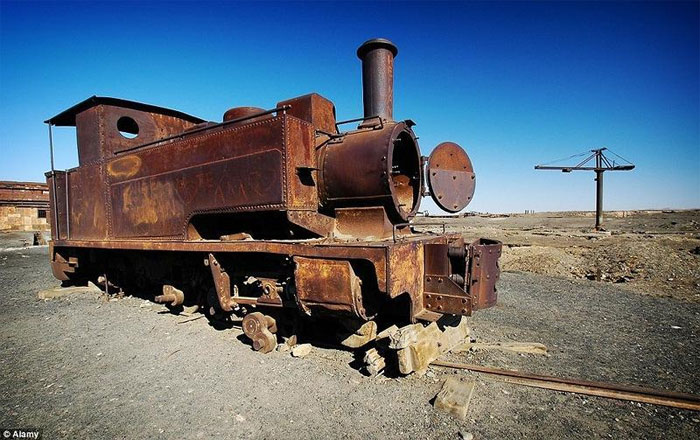Matchmaking factories at Humberstone and Santa Laura
Unesco's Scientific, Educational and Cultural Organization has recognized the brimstone factories at Chile's Humberstone and Santa Laura as World Cultural Heritage in 2005.

Despite being recognized as a World Cultural Heritage site, brimstone factories in Humberstone and Santa Laura must be listed in the List of endangered heritage sites for a long period of abandonment.
Humberstone is a small town on Chile's Atacama Desert founded in 1862. This town is home to the concentration of sodium nitrate deposits. The name of the town is named after an Englishman - who has made a fortune and built the small town of Humberstone to become rich for a long time.

Santa Laura was founded 10 years after Humberstone in 1872, which is 1.6 km from Humberstone. The reason Santa Laura was founded by the attraction of producing matches from Humberstone has led some families in other regions to live and settle down.


Pictures of some salt production factories at Humberstone and Santa Laura are still left
Along with Humberstone, the town of Santa Laura next door has grown rapidly. It is not too much to say that both of these towns have grown to an explosive level, reaching their peak in the 1930-1940s. From the mines of sodium nitrate mines, it is exploited and produced into salt matches KNO3, NaNo3 . These are important ingredients in fertilizers and explosives. Brimstone factories in Humberstone and Santa Laura exploit and produce raw materials and resell them to neighboring towns. At that time sodium nitrate was considered " white gold " so the factories here developed and expanded extremely fast.

The most heyday of the region around 1870-1900, brimstone factories in Humberstone and Santa Laura turned northern Chile into the world's largest supplier of natural sodium nitrate materials . more than 200 sodium nitrate mining and processing plants.
Due to the increasing demand for labor to serve factories, the two towns of Humberstone and Santa Laura have sprung up quickly around factories, attracting thousands of people to the driest desert region of Earth . There are more than 3,700 people living in Humberstone, Santa Laura has a modest number with more than 450 households estimated at over 1,000 people live.

From a remote, arid land, Humberstone and Santa Laura have quickly developed and become rich towns . The profits from these mines seem endless, making factory owners continually invest in expanding production and exploitation scale. However, in the early years of the 40s, a synthetic chemical was invented that replaced sodium nitrate. This chemical is not only convenient but also cheap, so it has quickly replaced the brimstone material.

Due to the declining demand for mining nitrates, Humberstone and Santa Laura towns began to be abandoned. People living here also leave their villages to find new areas. Until 1961, Humberstone town's final pepper factory was closed. Since then, these 2 towns have been completely abandoned. From a remote but rich town, Humberstone and Santa Laura (especially Humberstone) became a "ghost" city . This ghost city has been forgotten, abandoned for about 10 years. By 1970, the Chilean government had recognized the town as the country's historic town and planned to build a proposal for Unesco to recognize the town as a World Heritage Site. In 2005, Unesco recognized salt production factories in Humberstone and Santa Laura as World Cultural Heritage listed in the list of endangered heritage.
Hatchery factories at Humberstone and Santa Laura in Chile are accredited according to criteria (ii), (iii), (iv).
Criterion (ii): The development of the sodium nitrate manufacturing industry at Humberstone and Santa Laura reflects the combined investment of a community. The form of sodium nitrate production and exchange is also a mode of cultural exchange among people in some regions in South America.
Criterion (ii): Nitrate mines and surrounding towns developed together as a large urban area with its own culture and characteristics.
Criterion (iv): Rapidly growing Nitrate deposits in Chile have turned this arid desert region to become the world's largest supplier of natural sodium nitrate materials, efficiently and efficiently. Agricultural areas across the sentence.
- Let DNA make matchmaking
- Discover the 'super car' of Santa's models
- The prototype of Santa Claus - The fairy of young children around the world
- Fantasy about Santa's magic ability
- Why does Santa wear red clothes again?
- Santa is under the eyes of the physicist
- Strangely, she has penetrating eyes
- The bone fragment of Santa's prototype
- What does Santa need to overcome to get Christmas gifts?
- Santa Claus under the eyes of science
- Stunned with Santa's 'terrible' workload
- Where is Santa's office?
 Suzhou classic bonsai garden - China
Suzhou classic bonsai garden - China Chau Nguyen Dynasty
Chau Nguyen Dynasty Thai Son Mountain - World Wonder
Thai Son Mountain - World Wonder Ancient villages of Shirakawa-go and Gokayama
Ancient villages of Shirakawa-go and Gokayama